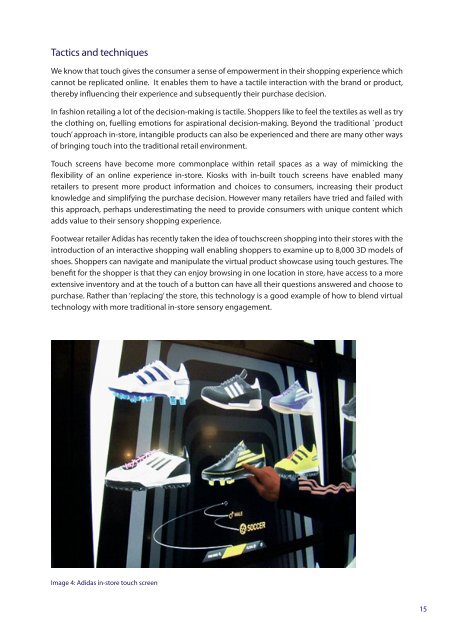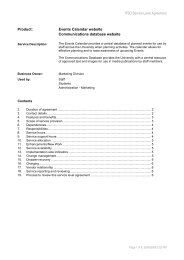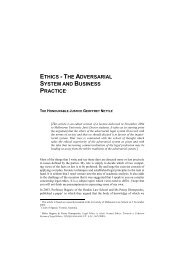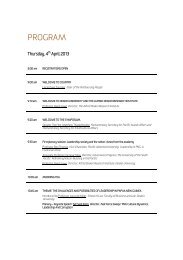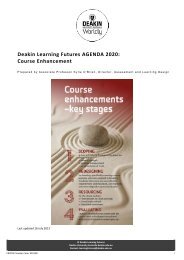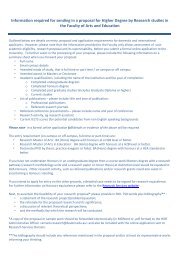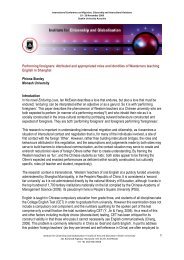Store sense: Reclaiming the four walls with - Deakin University
Store sense: Reclaiming the four walls with - Deakin University
Store sense: Reclaiming the four walls with - Deakin University
You also want an ePaper? Increase the reach of your titles
YUMPU automatically turns print PDFs into web optimized ePapers that Google loves.
Tactics and techniques<br />
We know that touch gives <strong>the</strong> consumer a <strong>sense</strong> of empowerment in <strong>the</strong>ir shopping experience which<br />
cannot be replicated online. It enables <strong>the</strong>m to have a tactile interaction <strong>with</strong> <strong>the</strong> brand or product,<br />
<strong>the</strong>reby influencing <strong>the</strong>ir experience and subsequently <strong>the</strong>ir purchase decision.<br />
In fashion retailing a lot of <strong>the</strong> decision-making is tactile. Shoppers like to feel <strong>the</strong> textiles as well as try<br />
<strong>the</strong> clothing on, fuelling emotions for aspirational decision-making. Beyond <strong>the</strong> traditional `product<br />
touch’ approach in-store, intangible products can also be experienced and <strong>the</strong>re are many o<strong>the</strong>r ways<br />
of bringing touch into <strong>the</strong> traditional retail environment.<br />
Touch screens have become more commonplace <strong>with</strong>in retail spaces as a way of mimicking <strong>the</strong><br />
flexibility of an online experience in-store. Kiosks <strong>with</strong> in-built touch screens have enabled many<br />
retailers to present more product information and choices to consumers, increasing <strong>the</strong>ir product<br />
knowledge and simplifying <strong>the</strong> purchase decision. However many retailers have tried and failed <strong>with</strong><br />
this approach, perhaps underestimating <strong>the</strong> need to provide consumers <strong>with</strong> unique content which<br />
adds value to <strong>the</strong>ir sensory shopping experience.<br />
Footwear retailer Adidas has recently taken <strong>the</strong> idea of touchscreen shopping into <strong>the</strong>ir stores <strong>with</strong> <strong>the</strong><br />
introduction of an interactive shopping wall enabling shoppers to examine up to 8,000 3D models of<br />
shoes. Shoppers can navigate and manipulate <strong>the</strong> virtual product showcase using touch gestures. The<br />
benefit for <strong>the</strong> shopper is that <strong>the</strong>y can enjoy browsing in one location in store, have access to a more<br />
extensive inventory and at <strong>the</strong> touch of a button can have all <strong>the</strong>ir questions answered and choose to<br />
purchase. Ra<strong>the</strong>r than ‘replacing’ <strong>the</strong> store, this technology is a good example of how to blend virtual<br />
technology <strong>with</strong> more traditional in-store sensory engagement.<br />
Image 4: Adidas in-store touch screen<br />
15


